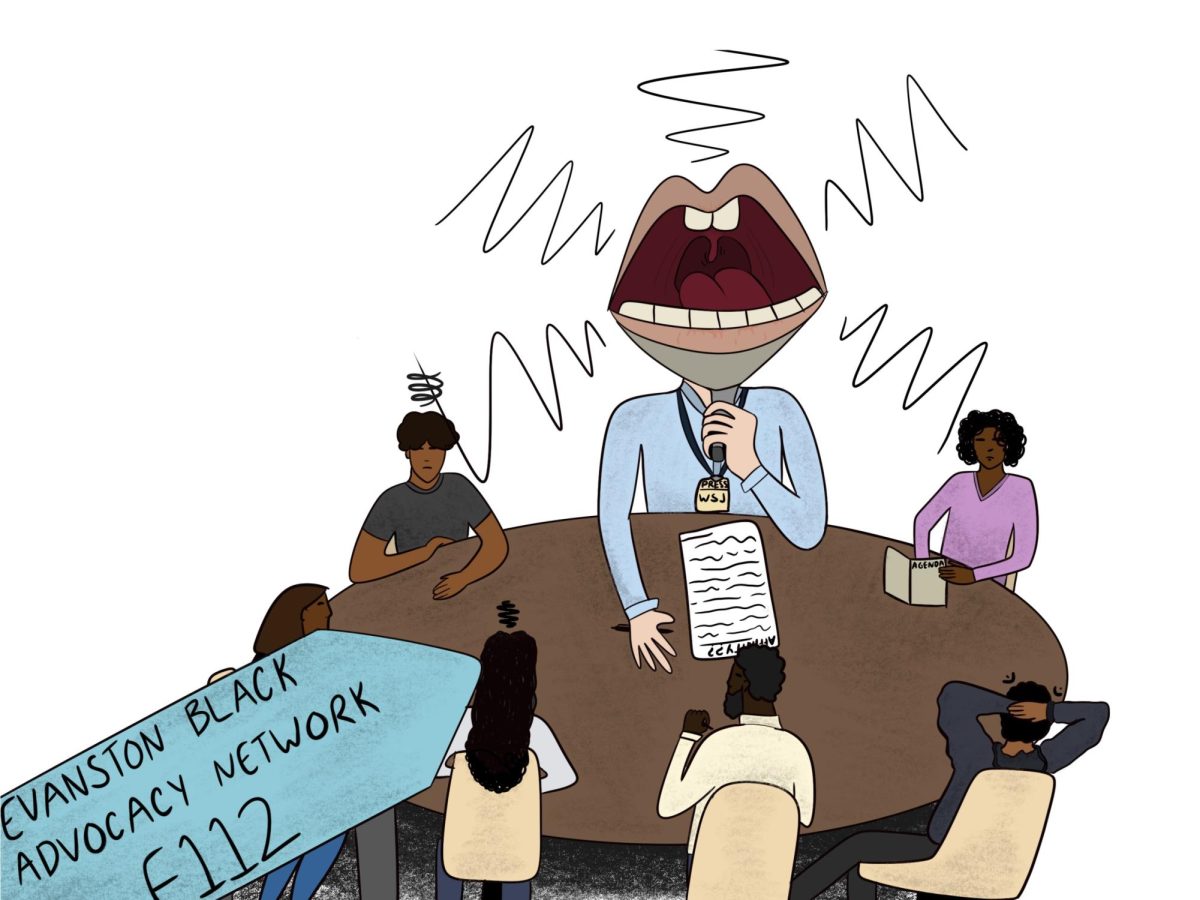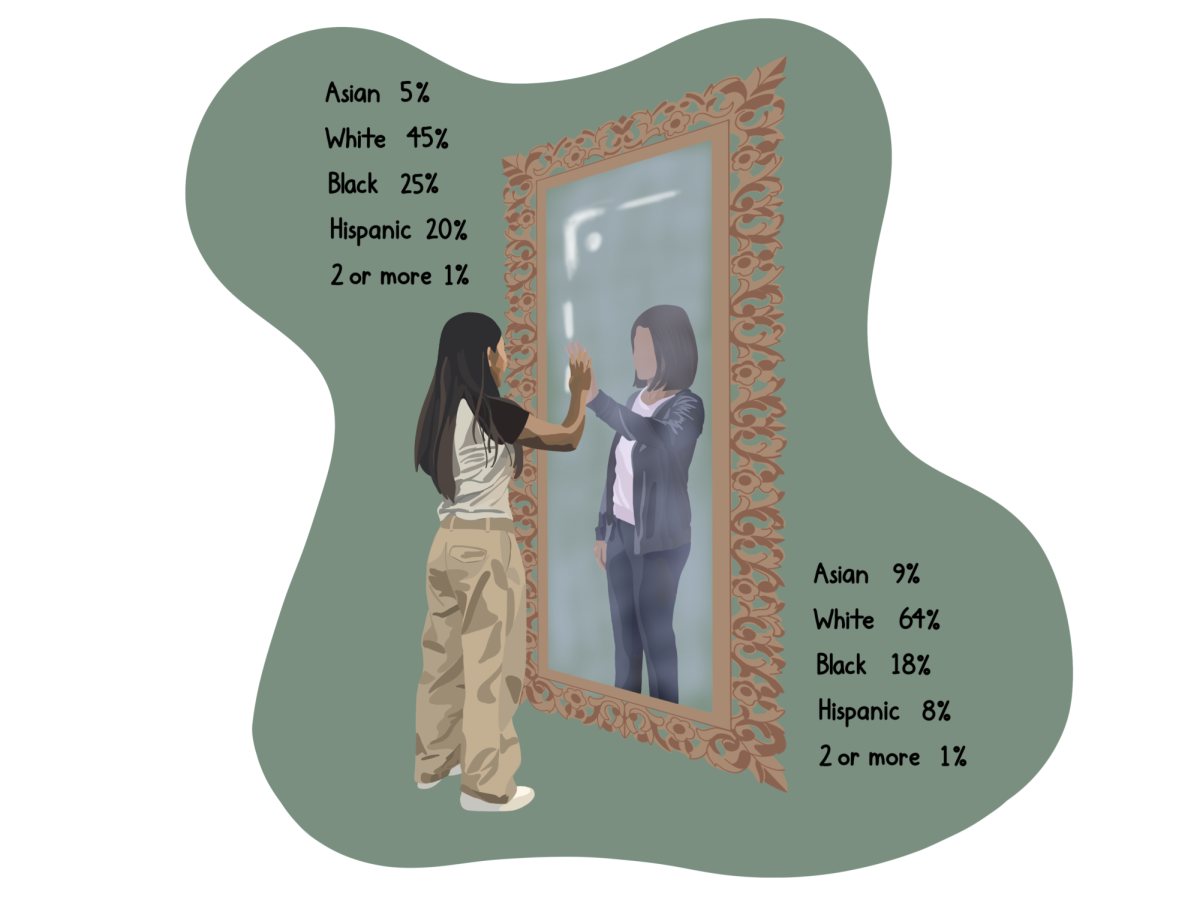In November, just over 77 million Americans voted Trump—and the policies he vowed to implement—into office. Among those were his promises regarding immigration, especially the forced removal of undocumented immigrants from American soil. While recent policies that further that goal reflect the desires of the federal government and many Amercians, the specific decision to allow ICE raids in schools is a major step back for our country.
Because the enforcement of such policies has happened in rapid succession, the reality of many students’ situations is still being adjusted to—where fear and anxiety are becoming increasingly associated with school attendance. Spanish teacher Antonio Quintero noted that, while the changes in student behavior may be subtle, the effects of those fears are still becoming palpable within the classroom.
“It’s not this obvious behavior that you would necessarily see [immediately], it’s more nuanced—it’s maybe a sad look, or you ask someone how [they’re] doing or how’s their family, and it’s consternation on their face,” Quintero said. “Someone who normally has their phone away or who normally pays attention throughout the class, they might be more distracted than usual. It might just be this overall defeated look.”
Education for all is a key tenet of American democracy, and the dismantling of that system for millions of children or their parents who lack proper documentation only serves to hurt that ideal democracy. Thankfully, there are ways to address that in school communities.
“School can be a great support for our families—it can not just be a place to learn and teach, but it could be [a place] to support families in times of crisis like this,” said Mercedes Fernandez, Latino Liaison and Minority Language Coordinator.
Cultivating that kind of support within schools has become increasingly crucial following the implementation of Trump’s immigration policies—policies that put said schools, the communities that are supposed to protect their students, at the risk of losing that kind of protection.
“So we need to at least be aware and create this sense of unity among students, teachers, staff, and work together,” Fernandez continued. “Because things have been happening too fast, too fast from one to another—schools are going to be intervened, [are] churches next?”
Fernandez and Quintero can attest to the fact that this as much as this is a pivotal moment in history, it is a pivotal moment in many students’ educations. But overall, as a community, we must emphasize the importance of maintaining a safe environment where students do not feel endangered by the prospect of coming to school everyday. Part of sustaining this is remaining consistent in offering support and resources for those impacted, and also respecting the privacy of students, as they struggle with newfound anxieties regarding immigration enforcement.
“What makes it a challenge is I want to be there, I want to support my students, and I want to be kind and understanding. But that in this moment sometimes just means not asking questions,” said Quintero. “We can’t assume anything about anyone, so, [having] empathy, compassion, trying to understand how one is feeling, getting them the right information and the right resources, goes a long way.”
Building community is essential, but further action to make our educational system safer needs to happen at a government level. When students cannot learn in an environment that feels safe and welcoming, they cannot learn at all, and that is why the threat of ICE raids in schools is so destructive.
Throughout history, and in recent times, countries with oppressive governments have restricted educational opportunities and resources for their people. In 2021, Afghanistan, under Taliban rule, imposed severe restrictions on education for women and girls. Since August 2024, about 1.4 million women have been actively barred from attending secondary school and universities. The Taliban justify banning girls’ education using a mix of ideological, religious, and political reasoning. As we in the United States continue to implement and publicize immigration laws within schools, we also step further and further away from the principles rooted in American soil: liberty, equality, democracy, rights, justice, opportunity, and unity. Furthermore, we start to walk the same path as oppressive governments in our world, ones that we do not want to emulate.
We are proud to note that ETHS is one of many schools across the country leading efforts to resist immigration raids in schools. On Jan. 20th, District 202 Superintendent Marcus Campbell sent out an email to all ETHS staff, students and parents, stating that the school is “fully committed to protecting the rights of all students to a free public education, regardless of their immigration status.” The email then provided an overview of the school’s policy, which included not releasing confidential immigration status or related information for students and staff unless court ordered, not working with ICE, and not allowing ICE agents to enter the school’s facilities without a judicial warrant signed by a federal judge. ETHS’ actions align with those of the Chicago Public Schools.
“Chicago Public Schools does not ask families for immigration status and does not share student records with ICE officials unless agents have a court order or consent from the child’s parent or guardian, according to CPS,” stated a Jan. 22 article by the Chicago education reporting site Chalkbeat Chicago.
As students, neighbors and community members, we must not only advocate for the safety of students but inspire our community to justifyingly challenge laws that undermine the core values of our country, whether that be providing legal assistance and resources for immigrant families or educating ourselves on our rights.









